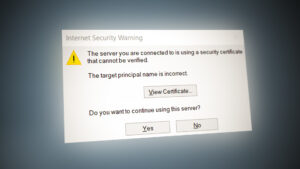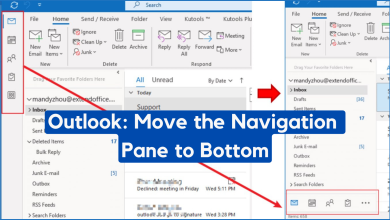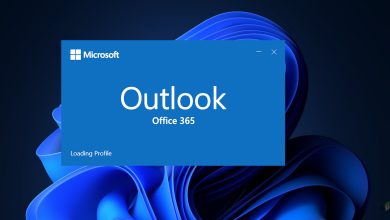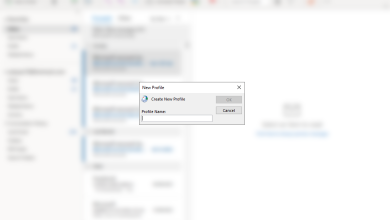Server you are connected is using security certificate [Error Fixed]
The error message ‘The server you are connected to is using a security certificate that cannot be verified’ is often caused by network and connectivity problems likely due to hostname errors. While using Microsoft Outlook 2010 or 2013, you might get this error if the mail server credentials that you entered are not correct.

Due to this error, you might not be able to use some applications that require Microsoft Outlook or if you want to use your favorite email account through Microsoft Outlook. In this article, we will be going through the potential causes of the issue in detail and later on explain the possible fixes that you can implement to get the problem sorted out.
What causes the ‘The Server you are Connected to is Using a Security Certificate that Cannot be Verified’ Error Message?
This error might pop up because the MS Outlook is not able to complete the connection process whether it was an email account or anything else. Usually, it is caused by some of these issues:
- Wrong Hostname: Many times, when users are configuring MS Outlook for a new account, they mistakenly type the hostname wrong and since when the hostname is wrong, there is no chance of any connection.
- ISP Changed the mail server’s name: Another cause would be that the ISP has changed their mail server i.e its name and thus, you are being redirected from an old address to new ones, and that new address is not in their SSL certificate list
- Ports Blockage: If you are in a school or university or any other such place which is under restrictions and some of the SSL ports which MS Outlook’s email client uses are blocked, then you will not be able to connect to the email account and you will get this error.
- Wrong Ports in Configuration: If you have entered the wrong port numbers for your mail server while you were configuring an account, then you are going to get this error. As wrong port numbers mean no connection of the email client and the mail server.
- Time/Date Issue: If your computer’s day/time is not correct, that might result in this error message.
- Certificate issues: Sometimes, invalid certificates between the mail server and the email client can cause this issue. If your MS Outlook’s certificates are not valid for the mail server that you want to connect to, then you will get this error.
Now, in order to fix the issue, you can use the solutions given down below.
Solution 1: Match Certificate Name
The first solution that you have to look for is that the name of the certificate in MS Outlooks is same as of the mail server. To do that, follow the given instructions:
- Once you get the error, click on View Certificate.

Internet Security Warning Message - Then, click on “Issued to Name” and make sure that the name there is the same as the name of the mail server.
- If it is not, change it and then try connecting again. Hopefully, it is going to fix your issue.
It is important to note that this might not work if the certificate has multiple names. In such a scenario, you need to try different names that are available and see if any among them works out. In case they don’t, you should contact your ISP regarding any changes made in their DNS and ask for further assistance.
Solution 2: Use domain of your hosting company as mail server (if using a shared web hosting)
Since, on shared web hosting, the web hosting company is hosting many mail servers of many domains and all of them point to the same address given that the mail server’s address is same. Furthermore, these web hosting companies can’t renew SSL for each domain as it’s very expensive so they do it only for their own domain name. Thus, at such times, there come certificate issues due to which you can’t connect to your mail server by using your own domain name and you get an SSL certificate warning.
Therefore, it’s recommended to use the domain name of your hosting as your mail server:
For example: mail.yourhostingdomain.com Instead of mail.yourdomain.com
Solution 3: Add Non SSL ports
Sometimes, in universities, schools and other places, there are some restrictions and many popular mail servers’ ports are blocked and the most common SSL ports as well for example SSL POP port 995, IMAP 993 and SMPTP 465. In such a case, what you can do is that you can try adding non-SSL ports and connect with these ports as they might not be blocked on your network. You can do this by following the instructions in the next solution. The ports are:
Non SSL POP Port: 110 Non SSL IMAP Port: 143 Non SSL SMTP Port: 587
Solution 4: Change Outgoing SMTP Port to 26
Many ISPs block the SMTP port 25 because of spamming etc, so if your ISP has blocked it as well, then you need to change the SMTP outgoing to port to 26. Here’s how to do that:
- Go to File and in the Info tab, click Account Settings and afterward select Account Settings again from the drop-down list.
- Highlight your email account and click Change.

Outlook Account Settings - Now, click on More Settings and switch to the Advanced tab.
- Change the SMTP Outgoing Port to 26.

Outlook Email Settings - Click OK.
Note:
It is recommended that you don’t install certificates unless it is a custom certificate or a certificate only particular to a certain mail server.
The good thing is that you don’t need installing certificates at all while connecting to many of the popular mail servers.
You only have to install certificates for those mail servers for whom certificates are not generated by a Certificate Authority. These certificates are called “Self Signed Certificates” and are only the certificates which need installation.





